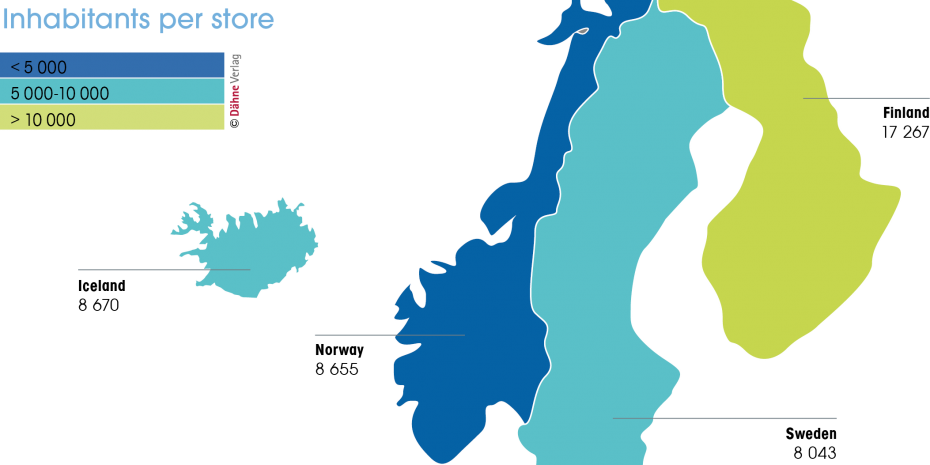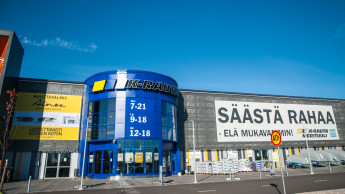For example, Sweden closed down public life much less drastically than other European countries did. And in Norway there were only some regionally limited restrictions at the end of the year which impacted on trade and therefore also the DIY stores.
The "regional report" in this edition of DIY International contains detailed accounts of the course of the thought-provoking year 2020 in several countries and companies. In contrast, this article summarises the figures with which the statistics department at the Dähne Verlag publishing house describes the overall situation of the industry (not only since coronavirus).
Where the countries differ most significantly is in the ratio of inhabitants to number of DIY stores. Two outliers stand out: in Norway, the density of DIY stores is markedly low with arithmetically around 4 700 inhabitants per store; this figure has even improved slightly from 2019 to 2020.
The network of available DIY store locations is thinnest in Finland. There are around 17 300 inhabitants to one DIY store there. This value worsened slightly from 2019 to 2020.
The three other countries in the region are almost on a level pegging. Denmark and Sweden have an almost identical value of a little over 8 000 inhabitants per store, in Iceland this is almost 8 700. However in all three countries the ratio is generally worsening.
When it comes to the trading companies which are active in the home improvement sector in the five countries, two key features are noticeable: these countries are strongly interconnected with each other, however they largely tend to remain amongst themselves.










